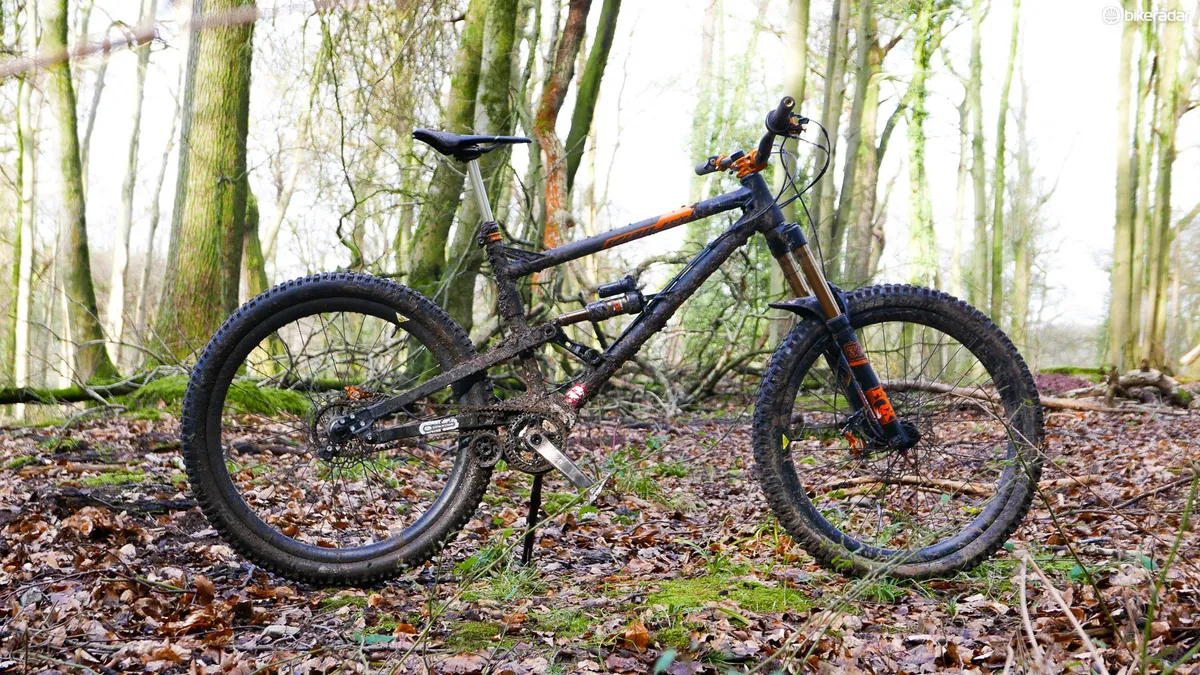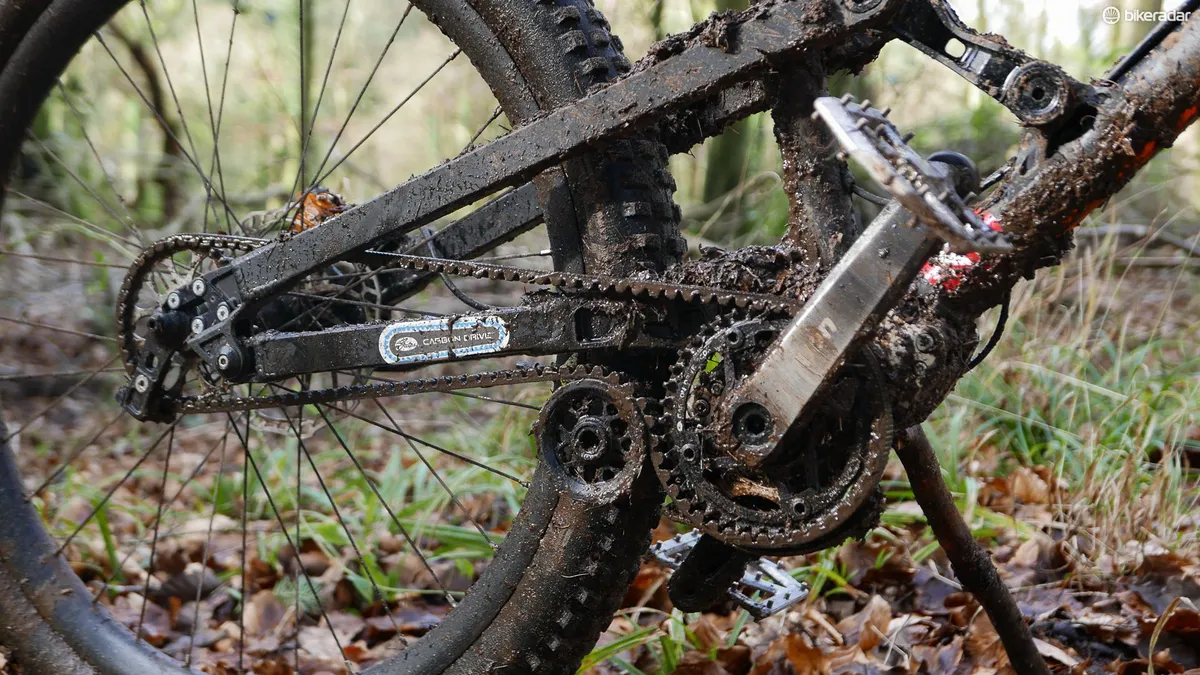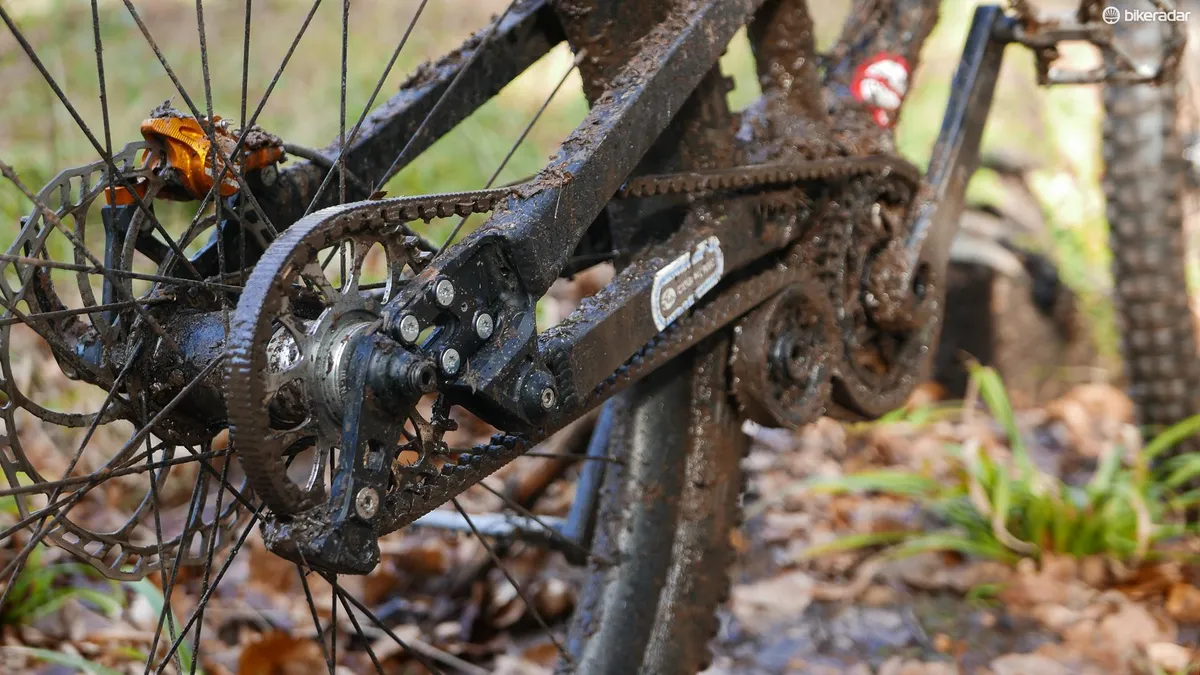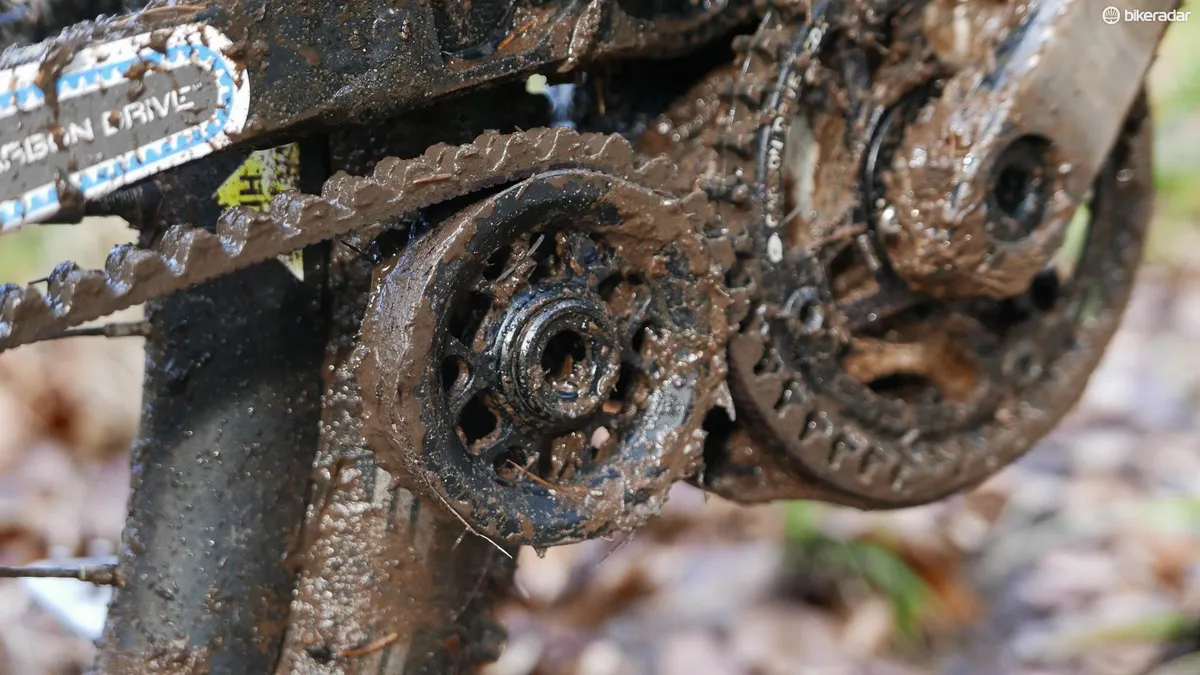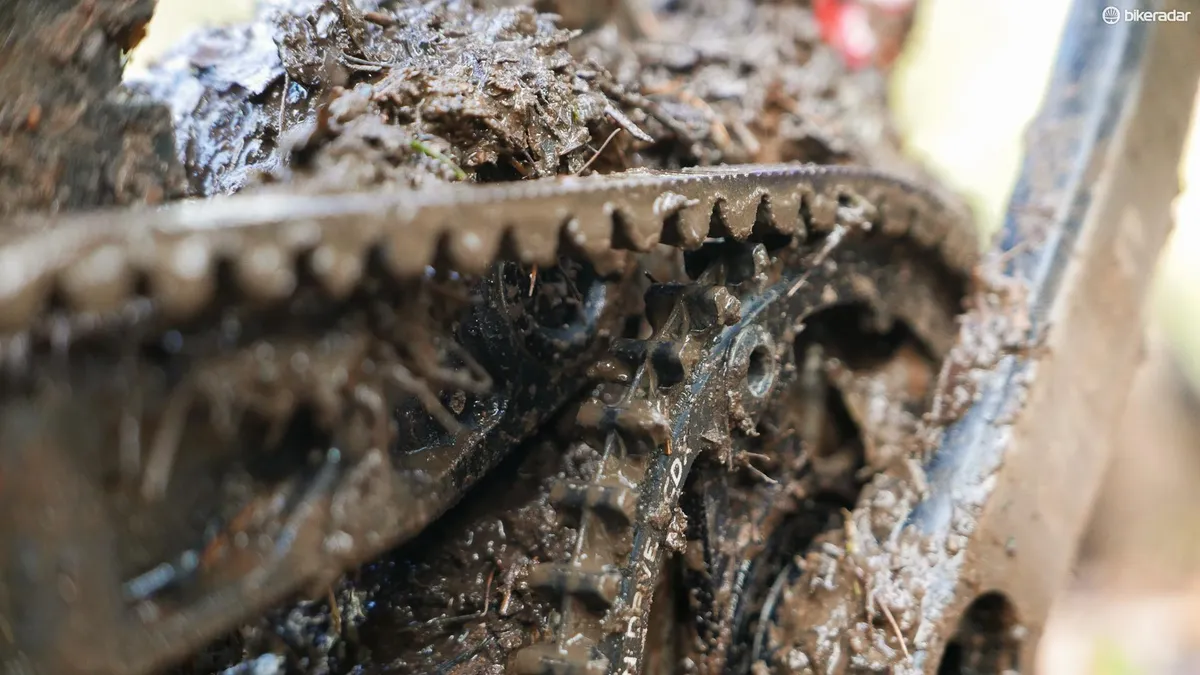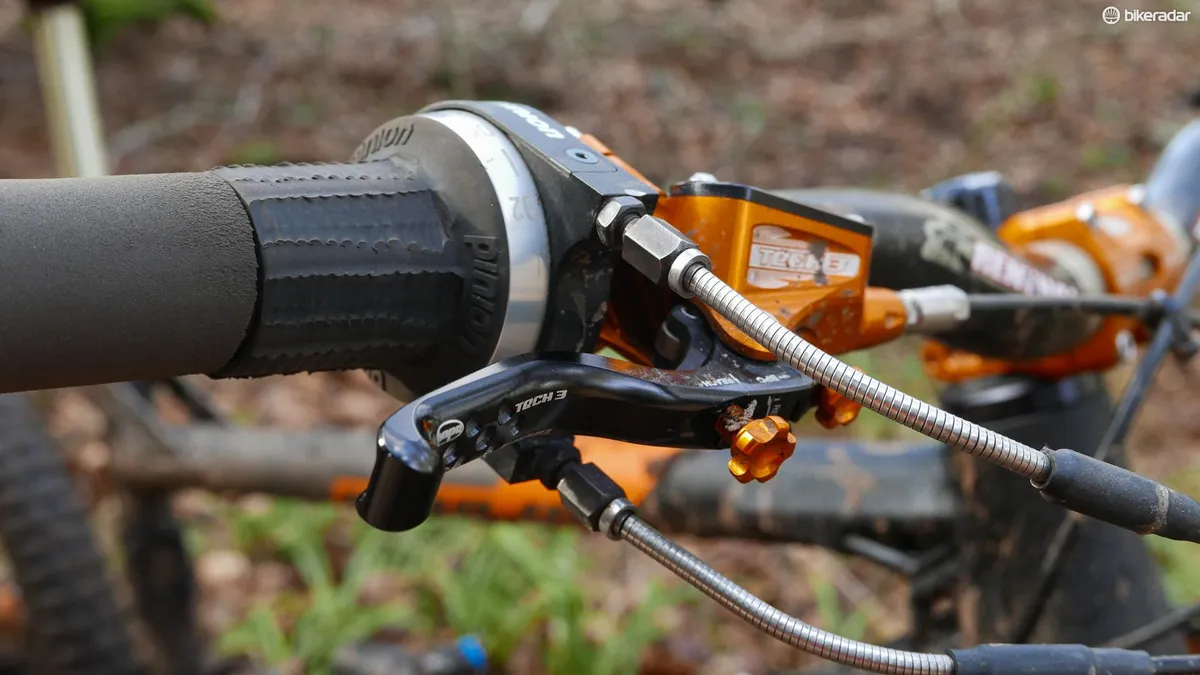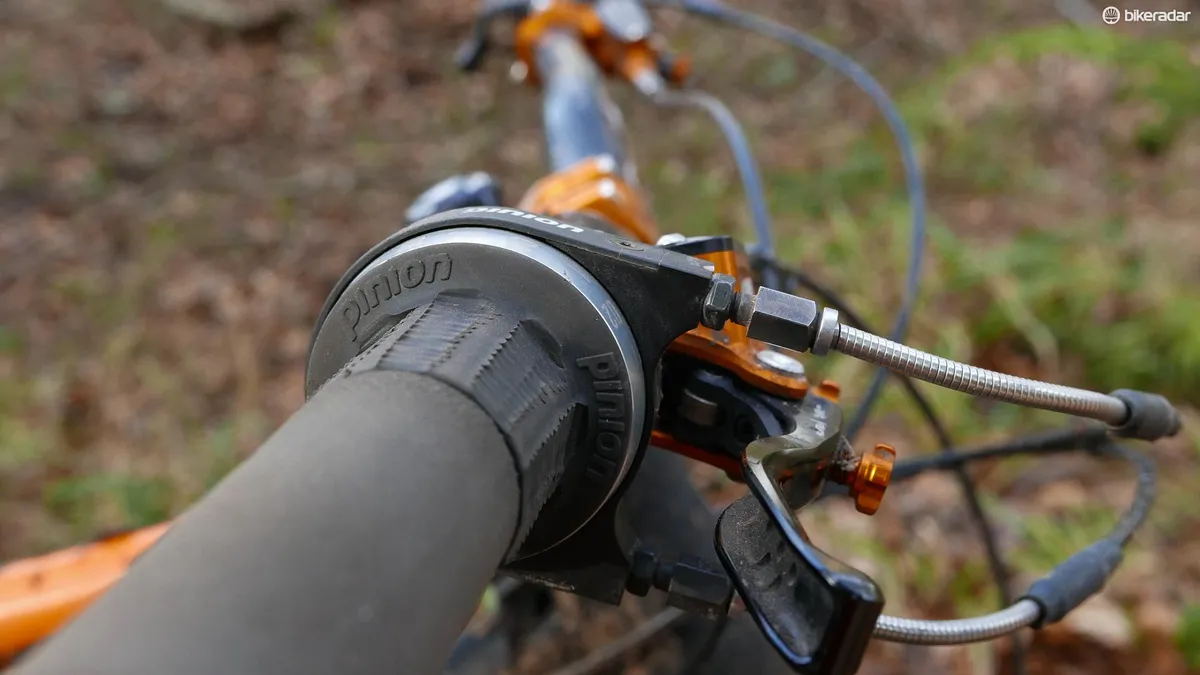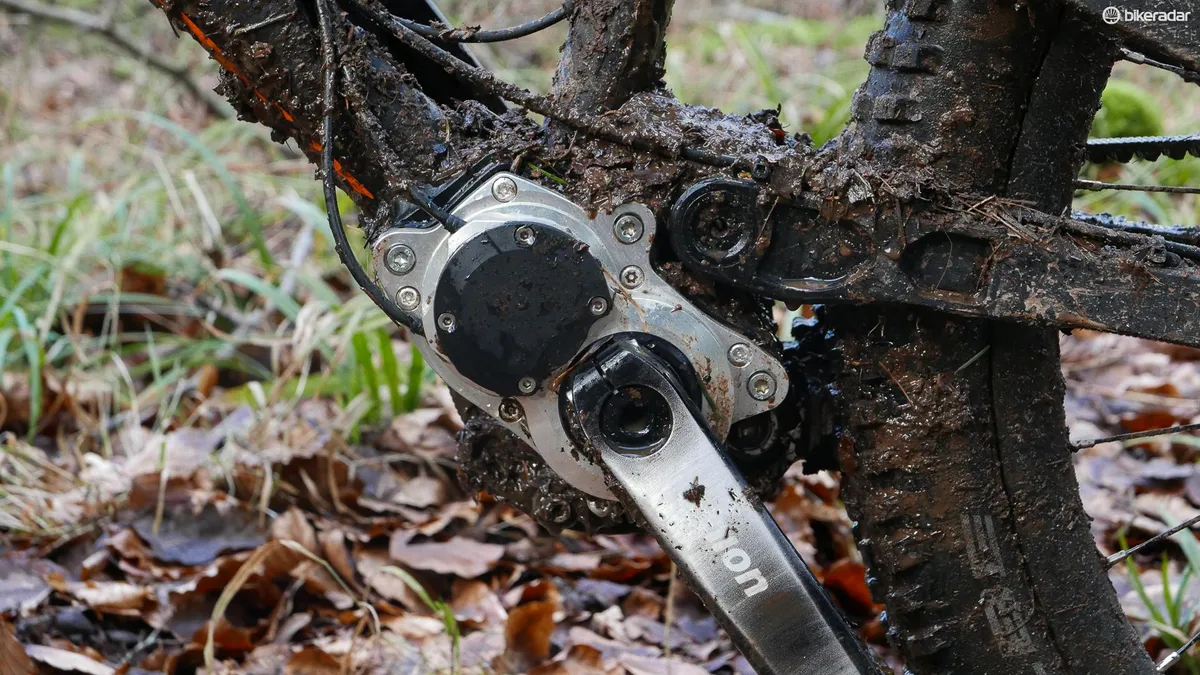With the Ion GPI, Nicolai has melded properly forward thinking geometry with a revolutionary drivetrain that does away with the derailleur. So does this add up to a bike that lights the way for things to come? Based on a test day aboard the strange beast, the answer to that question is both yes and no.
We’ve written before about the GeoMetron, the fruit of a collaboration between German frame builders Nicolai and the boundary-pushing boss of Mojo Suspension, Chris Porter.
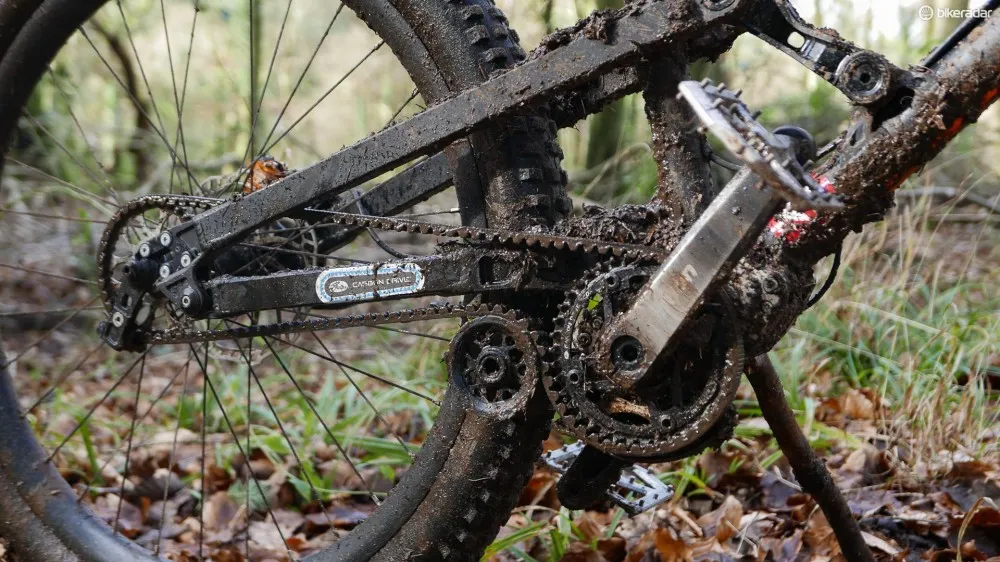
In a nutshell, the GeoMetron takes the basic outline of Nicolai’s 155mm rear travel Ion 16 and pairs it to geometry that’s slack enough be on the more radical edge of current World Cup downhill bikes despite only running a 160-180mm fork and being firmly designed as a do-it-all trail bike. It also has a much longer reach than most bikes on the market paired to a very steep seat angle.
Waggishly, the sizing runs from ‘Not that small’ to ‘Long’, ‘Longer’ and ‘Longest’ which roughly correspond to the usual spread from XS up to XL. That said, standover is designed to be low enough that you can size up should you feel it necessary. Fit wise, I'm 5ft 7in / 170cm and rode the ‘Longer’ bike without any discomfort, although the 150mm dropper post was as low as it would go in the frame.
We take a proper look at the gearbox concept
Riding, there’s no doubt that it takes an adjustment of riding technique and position. With the front wheel so far away, it’s necessary to take a more front-weighted bias when riding to prevent washing out. However, as the head angle is slack and the cockpit spacious, over time your confidence in the almost impossibility of going over the bars increases and the stable feel allows you to push hard everywhere, not just on steep and slippery terrain.
Thanks to the steep seat angle, seated climbing is a doddle too, with huge stability and mountain goat-like tenacity. Once acclimatised, riding a ‘normal’ bike can often take a lot of getting used to, as it will feel frankly precarious. It’s certainly not for everyone or everywhere, but to assume the bike is just a plummeting machine with just enough manners to get you up to the top again would be a mistake.
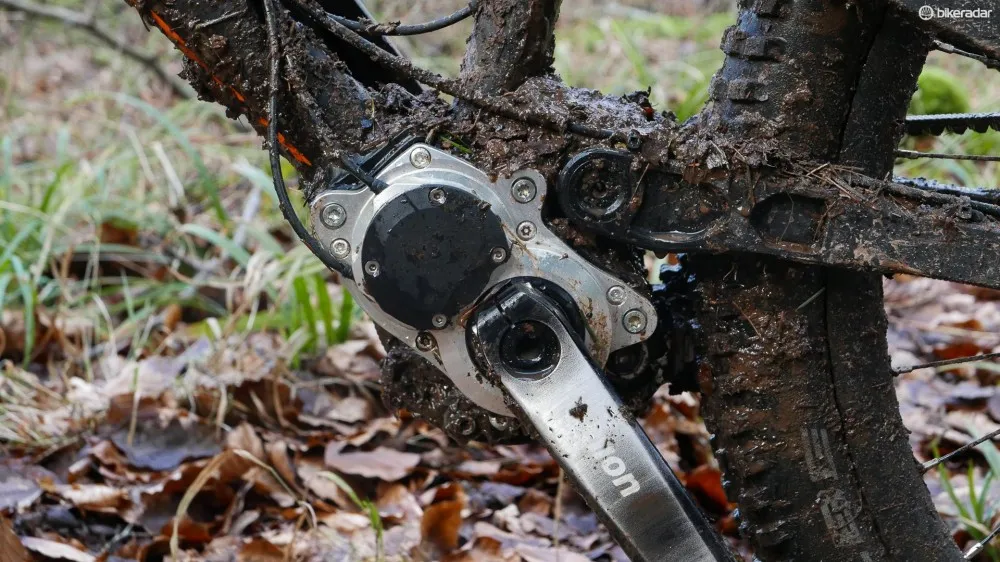
While all that is groundbreaking enough, the real talking point of this particular model is the Pinion gearbox slung low in its belly. That’s paired to the rear wheel via a belt, not a chain. That means that drivetrain maintenance should be a thing of the past – you certainly won’t have to worry about coming to find a squeaky, orange chain should you forget to clean and lube after a wet ride.
Utterly different suspension performance
The Gates Carbon Drive belt in fact requires no maintenance or additional lubrication. It’s very similar to the serpentine drivebelts you’d find on a motor vehicle, which run at high speed for tens of thousands of miles in an extremely stressful environment. Gates claims a lifetime of more than twice that of a conventional chain while Pinion reckons the box itself is good for a life of 60,000km and can go for 10,000km before needing an oil change. In the 12 speed option, the box also gives an overall gear range of 600%. For comparison, a SRAM 1x11spd setup gives you a range of 420%.
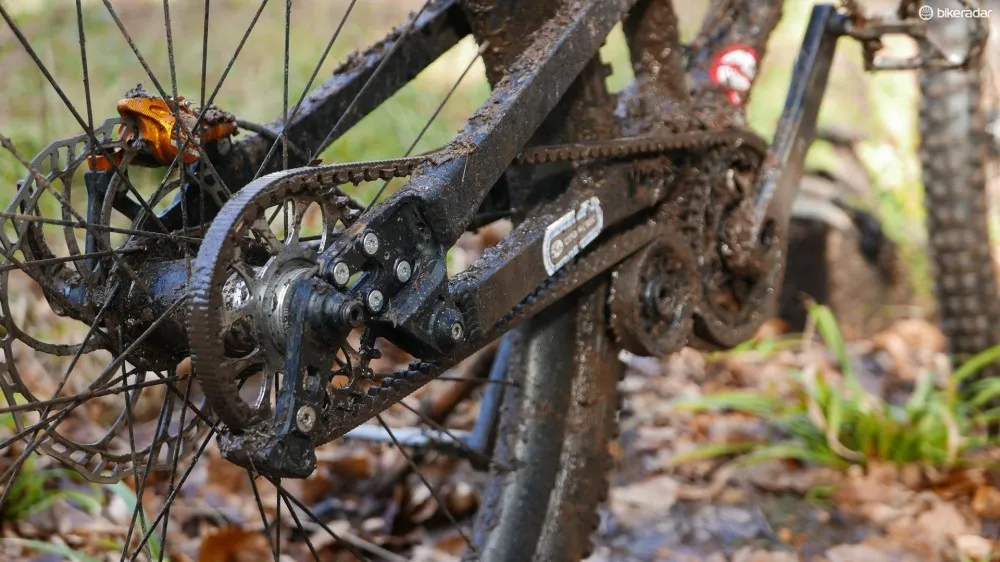
Having a gearbox also provides a number of important benefits for a bike designed to ride off road. First up, not having a cassette on the rear wheel or derailleur on the swingarm radically reduces the ratio of unsprung mass to sprung mass. Unsprung mass is the enemy of suspension performance – basically any weight on the ‘business end’ of the shock only serves to dampen how quickly the system can respond to impacts.
Nicolai claims a reduction of some 40% and that’s immediately noticeable. Pitching into extended rough and rocky terrain, it feels utterly different, with no feeling whatsoever that the rear end is being caught up in the chop. Without any fuss the rear wheel simply patters silently over terrain that’d usually be jarring and momentum robbing. It feels butterfly light, constantly letting you push harder without worrying about the violent spang of rim being beaten by rock or root.
Another side benefit of having the belt transferring motive force to the rear wheel is that the chainline – for want of a better word – is constant, rather than varying depending on what gear combo you’re in. That means the anti-squat characteristics of the suspension stay exactly the same, whether you’re hammering along as fast as you can or crawling up a huge slope.

Mojo and Nicolai have actually tweaked the anti-squat value from the normal GeoMetron to give a slightly softer feel as it meets bumps too. The lack of change is very noticeable, especially when climbing. While most bikes stiffen their suspension slightly under chain tension as you move to the large sprocket of a cassette, the GPI is just completely neutral. While that made it feel subjectively less ‘taut’ as you grind up a steep incline, it held tenaciously on to traction regardless and has pedalling manners as good as you can expect a bike weighing around 33lbs can have.
Shifting snags bar the path to greatness
The extra weight involved in using the Pinion box isn’t the thing holding it back from greatness. While Pinion says there’s only a small percentage increase in drag versus a cassette, my legs disagreed, especially in lower gears. Phil Pryor, who lent us the GPI demo bike, reckons that the box frees up the more you use it, an assertion borne out by the many riders who use gearbox designs for mega-mileage touring.
The box is also highly averse to shifting under load however. While timing your shifts to coincide with the dead spot in your pedalling stroke is almost certainly something that would come with time, I still struggled to get it right at the end of a long day aboard the GPI. Not being able to dump a load of gears under pressure also means you need to plan ahead for climbs or snappy acceleration out of corners, though the Pinion does have a big advantage in that you don’t need to be pedalling to shift. With practise, it’s possible to decide what gear you need as you’re going into the corner and pre-empt the shift you’ll need to exit.
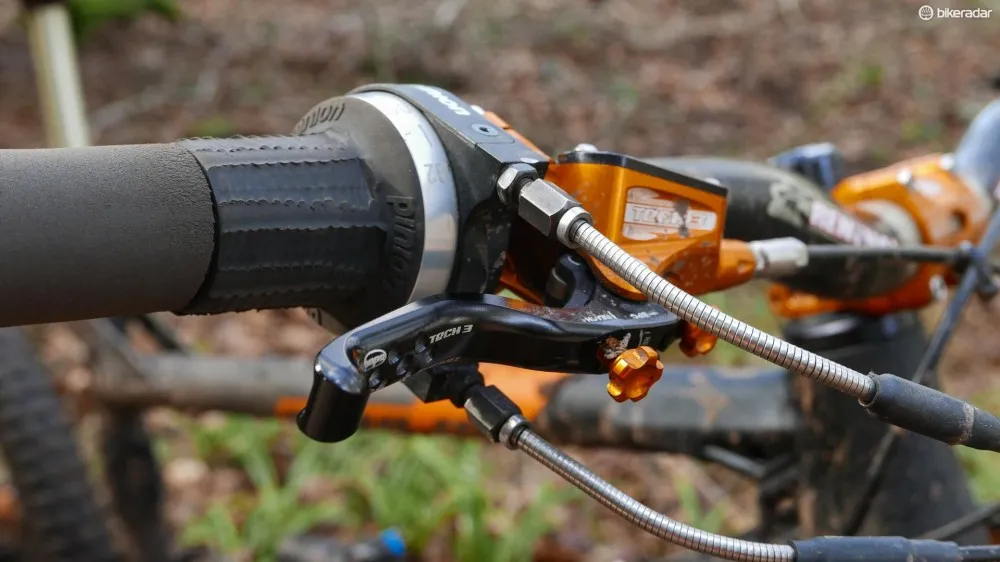
The real stumbling block however, would seem to be the simpler to sort. The Pinion still uses a twist-shifter as it has twin cables to both be able to pull both ways to actuate the ‘box. Even with the standard grip modified to be much lower profile, it’s still far from the nicest thing to use.
The other, and most serious, disadvantage is that shifting requires you to rotate your hand, weakening your grip on the bars. Even then, it’s a very weighty shift and needs deliberate force to pick a gear. The twist-shifter also makes braking and shifting at the same time real issue – something that comes close to precluding the ability to pre-shift as you enter the corner.
The trails we had our test day on were mostly gradual climbs followed by fast and furious descents, so I ended up leaving it in a single gear for most of them. On more gradient varied trails it would have been much more of an issue, but getting your head around the shifting requirements was still a distraction from being able to focus on lines and flow. We’ve no doubt that given time a rider would adapt to ride around these drawbacks, but some of these issues are simply insurmountable with the shifter as it stands.
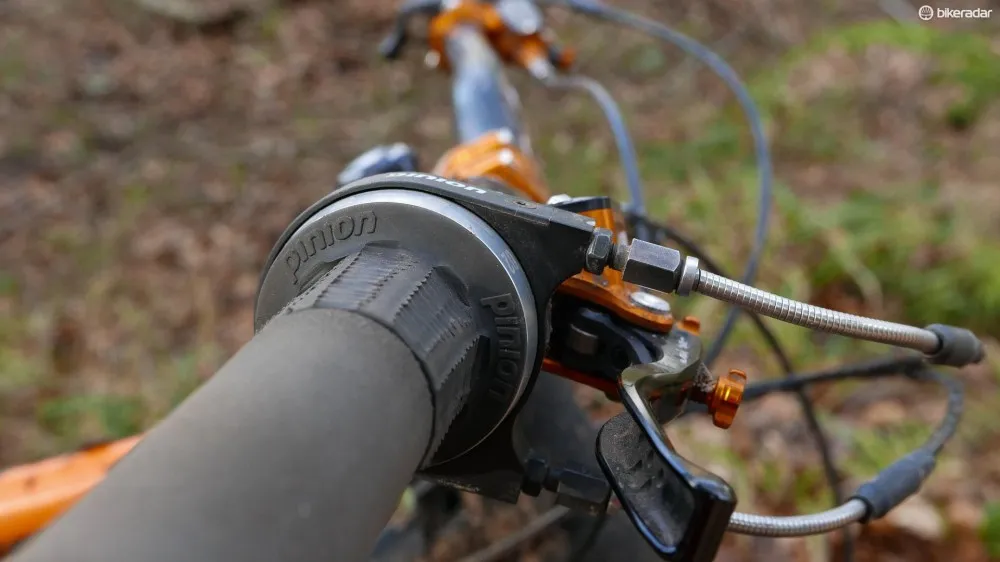
All in all, this bike shows the inherent promise of a gearbox bike for mountain biking. There’s no doubt that it will last longer than a number of conventional drivetrains and require minimal maintenance, a real boon. The rear suspension performance is also simply superior in almost every way over a conventional setup, while having the bulk of the weight mounted low down and centrally is also a great idea from a dynamic viewpoint.
If Pinion can develop a trigger shifter of some kind then that would do a lot to sort these issues. As it stands, the GPI is a uniquely frustrating experience; shining in places and utterly annoying in others. The concept has a future, it just needs a lot of development work – something not easy for a small company facing what is still a minute market.
